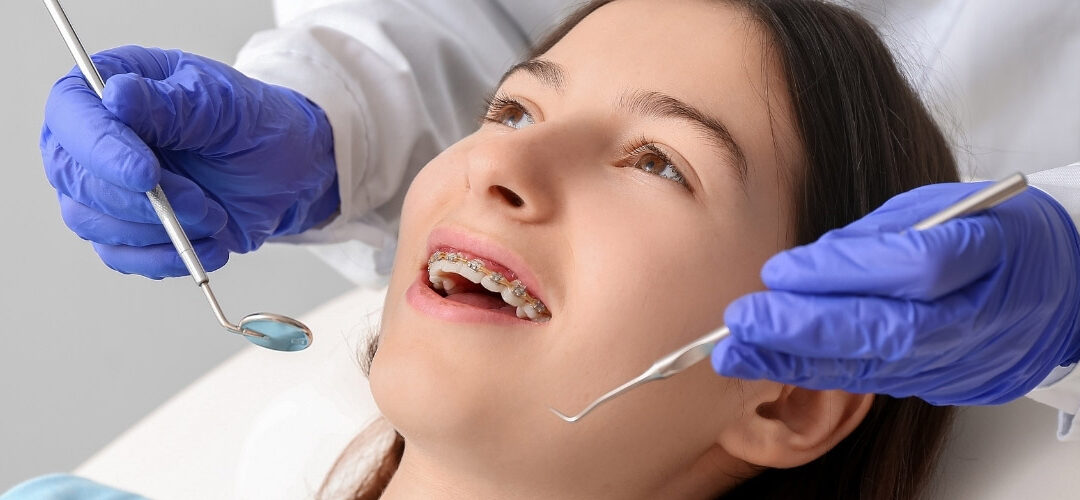Comprehensive Overview to Orthodontics Procedures for Fixing Dental Misalignments
In the realm of orthodontics, the journey to achieving a perfectly aligned smile entails a myriad of treatments customized to fix dental misalignments. From traditional dental braces to undetectable aligners and also surgical choices, the field of orthodontics offers a series of remedies to attend to varying degrees of oral irregularities. Understanding the intricacies of each treatment, including their mechanisms, advantages, and prospective drawbacks, is crucial in making notified decisions regarding one's orthodontic therapy. As we navigate through the thorough guide to orthodontic procedures for remedying dental imbalances, the elaborate information of each technique will certainly unfold, losing light on the path towards a functional and unified dental alignment.
Orthodontic Procedures Review

In addition to conventional braces and clear aligners, orthodontists may also recommend various other treatments like headwear, palatal expanders, or retainers to resolve details placement concerns (orthodontist). These procedures are tailored per person's unique needs and might entail a mix of treatments to attain the preferred results. Regular adjustments and surveillance are critical components of orthodontic treatment to guarantee progress is on track and to make any kind of essential alterations in the process. By going through orthodontic procedures, clients can not only attain a straighter grin but also improve their total dental wellness and function.
Traditional Dental Braces: How They Function
When taking into consideration orthodontic therapies for dental misalignments, standard dental braces stick out as a time-tested approach for correcting teeth positioning. Conventional dental braces include brackets, cables, and bands that interact to apply continuous stress on the teeth, progressively relocating them right into the wanted alignment. The braces are affixed to the teeth using a special adhesive, and the cables are threaded with the braces. By changing the stress of the cords, orthodontists can manage the instructions and pressure related to each tooth, assisting them right into correct placement with time.
One secret aspect of just how typical dental braces work is the process of bone renovation. As pressure is used to the teeth via the braces, the bone surrounding the teeth is improved to support the new tooth placements. This makeover is crucial for the lasting stability of the fixed alignment. People will need normal modifications at the orthodontist's office to make certain the braces continue to use the appropriate stress for efficient teeth movement.
Invisible Aligners: Disadvantages and pros
Undetectable aligners provide a very discreet and convenient option to traditional dental braces for correcting dental imbalances. These clear, tailor-made trays are virtually undetectable when worn, making them an attractive alternative for individuals seeking an extra aesthetically pleasing orthodontic therapy. Among cigna dental the key benefits of unseen aligners is their removability, enabling simpler maintenance of oral health contrasted to conventional braces. Individuals can get rid of the aligners before consuming or cleaning their teeth, lowering the risk of food getting embeded the device and simplifying the cleaning process.

Surgical Orthodontic Options
Surgical interventions in orthodontics existing feasible options for resolving complicated oral misalignments that might not be successfully dealt with via traditional orthodontic treatments. While invisible aligners and standard braces can deal with many orthodontic issues, particular cases call for medical intervention to accomplish optimum results. Surgical orthodontic alternatives are usually advised for severe malocclusions, substantial jaw discrepancies, and instances where the underlying bone framework requires modification to attain proper placement.
One common surgical orthodontic procedure is orthognathic surgical procedure, which involves repositioning the jaws to remedy extract useful concerns such as difficulty chewing or talking. This surgery is typically done in cooperation with an orthodontist who assists line up the teeth prior to and after the treatment. Surgical orthodontics may likewise entail treatments to reveal impacted teeth, remove excess gum cells, or reshape the jawbone to produce an extra unified face profile.
Before thinking about medical orthodontic options, patients undergo an extensive examination to establish the necessity and potential benefits of such treatments. cumming orthodontics. While surgical procedure might appear challenging, it can substantially enhance both the function and looks of the smile in situations where traditional orthodontic treatments fail
Retainers and Post-Treatment Care

Post-treatment treatment includes following the orthodontist's guidelines faithfully. This might include correct dental hygiene practices, participating in follow-up visits, and wearing the retainers as recommended. Failing to abide by post-treatment care guidelines can lead to regression, where the teeth gradually relocate back towards their original positions. Regular retainer wear, great oral health, and routine oral examinations are necessary for preserving the outcomes accomplished through orthodontic published here surgical procedure and making sure the long-term security of the fixed oral positioning.
Conclusion
In verdict, orthodontic treatments offer various choices for remedying oral imbalances. Surgical orthodontic alternatives are readily available for more severe misalignments. Generally, orthodontic procedures can successfully boost oral wellness and visual look.
As we browse with the detailed overview to orthodontic treatments for dealing with oral imbalances, the detailed information of each technique will unfold, losing light on the course towards a useful and harmonious dental placement. - cumming aligners
One of the most common orthodontic therapies is the usage of dental braces, which are composed of metal brackets and wires that apply gentle stress to slowly move teeth into the desired placement.When taking into consideration orthodontic therapies for dental imbalances, typical dental braces stand out as a reliable approach for fixing teeth placing. Additionally, unnoticeable aligners might not be appropriate for complex orthodontic concerns that need even more considerable teeth movement, as they are generally recommended for light to moderate instances. Retainers are tailor-made orthodontic devices made to hold teeth in their fixed positions after the conclusion of orthodontic treatment.